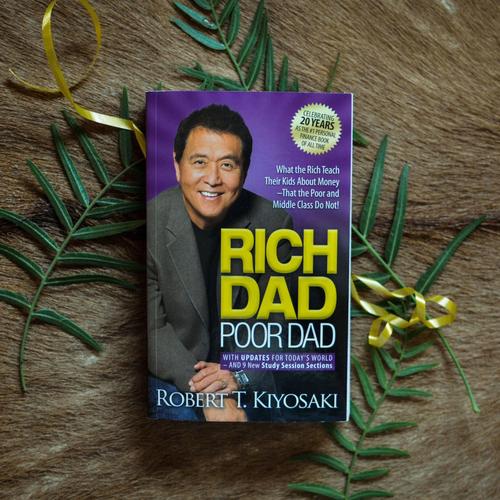
Understanding the Concept of Cash Flow
Cash flow is a critical aspect of personal finance that many people often overlook. It refers to the movement of money in and out of your accounts. Understanding cash flow is essential for making informed financial decisions and achieving financial independence. Robert T. Kiyosaki, the author of “Rich Dad Poor Dad,” emphasizes the importance of cash flow in building wealth.
Rich Dad Poor Dad: The Book
“Rich Dad Poor Dad” is a personal finance book written by Robert T. Kiyosaki. The book was published in 1997 and has since become a bestseller. It tells the story of Kiyosaki’s two dads: his biological father, who he calls “Poor Dad,” and his best friend’s father, who he calls “Rich Dad.” The book highlights the differences in their financial philosophies and how these differences shaped their lives.

The Rich Dad Poor Dad Philosophy
The philosophy of “Rich Dad Poor Dad” revolves around the concept of cash flow. Kiyosaki argues that the key to building wealth is not in earning more money, but in managing cash flow effectively. He emphasizes the importance of generating multiple streams of income and investing in assets that produce cash flow.
Understanding Cash Flow
Cash flow can be categorized into three types: operating cash flow, investing cash flow, and financing cash flow. Operating cash flow is the cash generated from your business or job. Investing cash flow is the cash used to purchase or sell assets. Financing cash flow is the cash used to finance your business or personal expenses.
Generating Multiple Streams of Income
One of the key principles in “Rich Dad Poor Dad” is the importance of generating multiple streams of income. Kiyosaki argues that relying on a single source of income, such as a job, is risky. Instead, he suggests creating multiple income streams through investments, businesses, and side hustles.
Investing in Assets That Produce Cash Flow
Kiyosaki emphasizes the importance of investing in assets that produce cash flow. He defines assets as anything that puts money in your pocket and liabilities as anything that takes money out of your pocket. By investing in assets, you can create a passive income that can help you achieve financial independence.

Table: Types of Assets and Liabilities
| Asset | Liability |
|---|---|
| Real estate | Car loan |
| Stocks | Student loan |
| Business | House mortgage |
Creating a Budget
Another important aspect of managing cash flow is creating a budget. A budget helps you track your income and expenses, ensuring that you are living within your means. Kiyosaki suggests using the 50/30/20 rule, where 50% of your income is allocated to needs, 30% to wants, and 20% to savings and investments.
Debt and Its Impact on Cash Flow
Debt can have a significant impact on your cash flow. Kiyosaki warns against taking on excessive debt, as it can tie up your cash flow and make it difficult to achieve financial independence. He suggests using debt strategically to invest in assets that generate more cash flow than the cost of the debt.
Building Wealth Through Education
“Rich Dad Poor Dad” also emphasizes the importance of financial education. Kiyosaki believes that financial literacy is crucial for building wealth. He encourages readers to learn about investing, real estate, and other wealth-building strategies.
Conclusion
“Rich Dad Poor Dad” offers valuable insights into the importance of cash flow in building wealth. By understanding cash flow, generating multiple streams of income, and investing in assets that produce cash flow, you can take control of your financial future. Remember, the key to wealth is not in earning more money, but in managing cash flow effectively.



